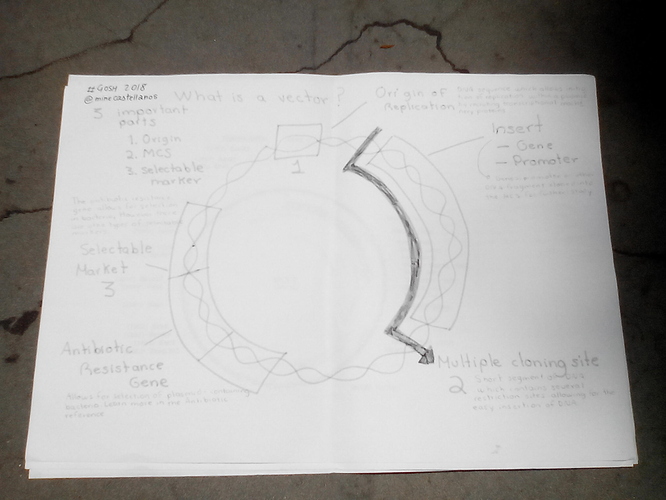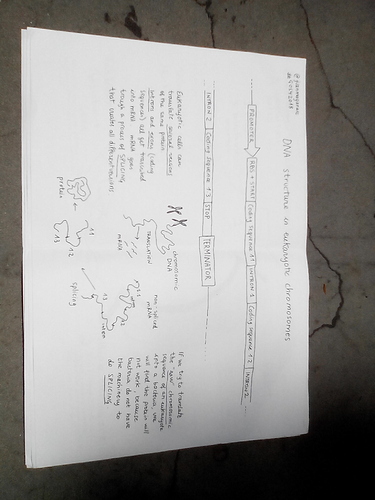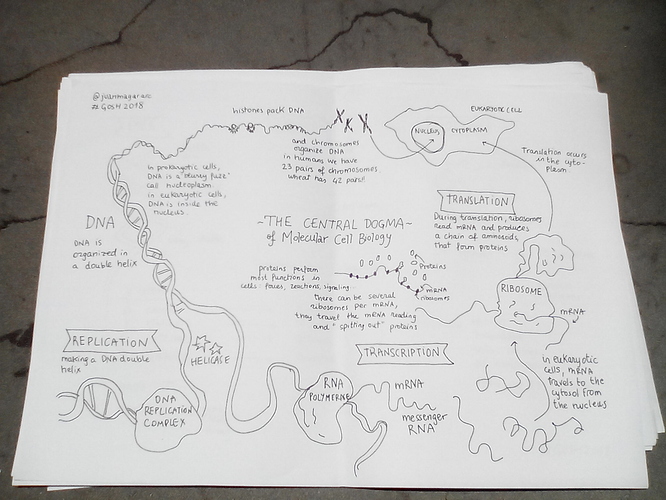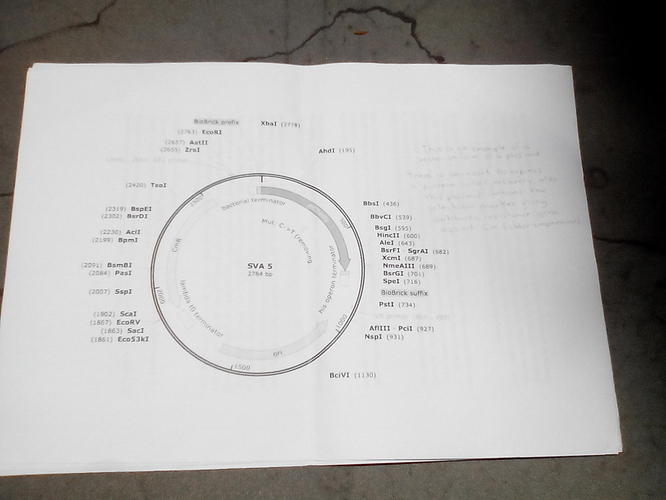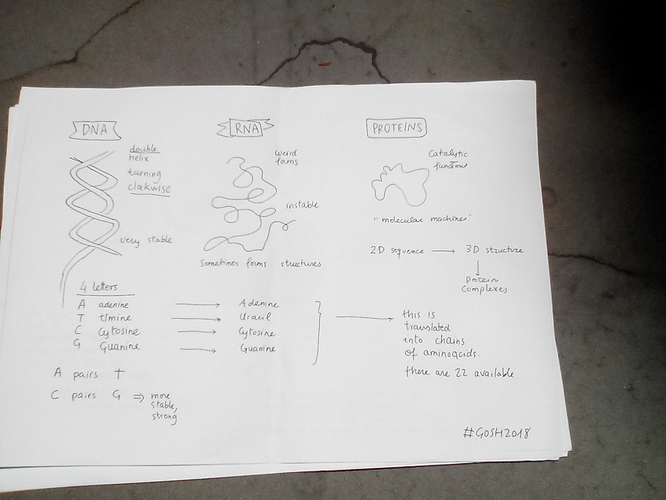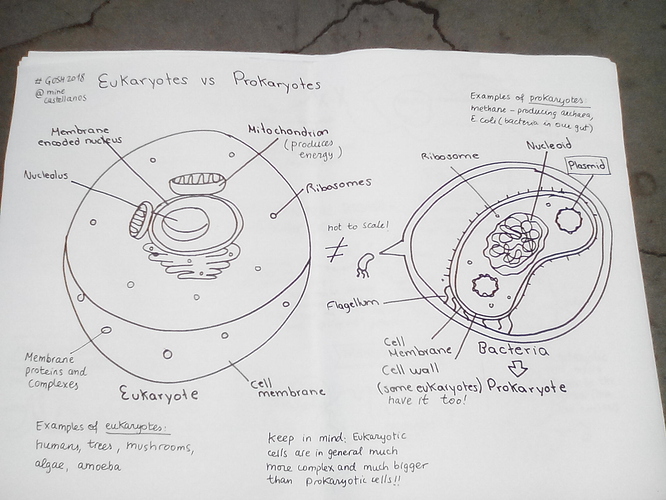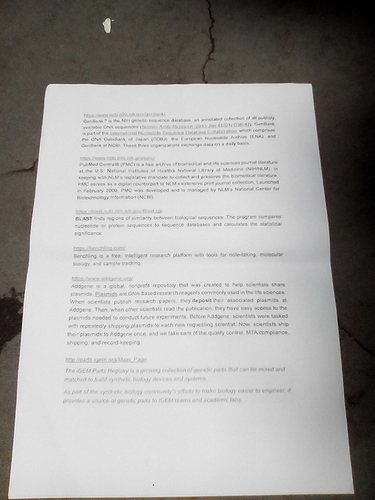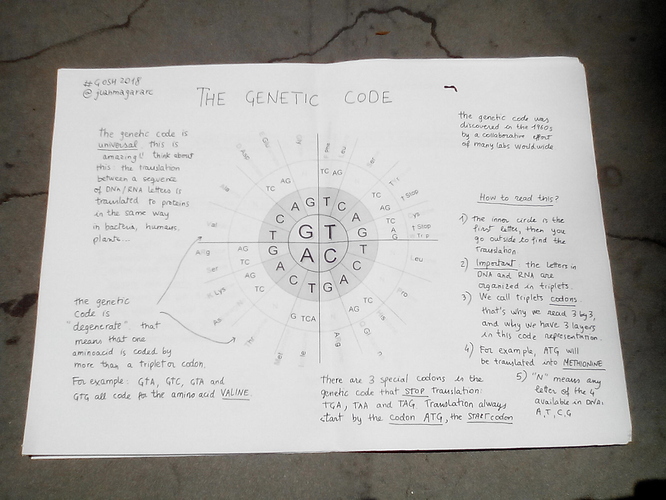Summary
This unsession, by Juanma and Minerva, and attended by about a dozen
people, started with an in-depth description of what DNA does and how
it works. Eukaryotes are considerably more difficult to work with
for various reasons, compared with bacteria. Bacteria can contain
short lengths of foreign DNA in the form of plasmids, in addition
to their own genomic DNA. It’s relatively easy to introduce these
plasmids into bacteria, and when this is done, it will be transcribed
into RNA and then translated into the corresponding protein.
Gene banks exist from which standard plasmids can be ordered.
The unsession ended with a note that this process is simple enough
that the security and bioterrorism implications have not escaped
the notice of state security agencies.
Notes
Fri 12 Oct 13:58:52 +08 2018
Convenor/facilitator: Juanma
Convenor/facilitator: Minerva
Notes: Harold
DNA coding
Intro
DNA in everything with cells, encodes information. Resistant to
degradation. From fossils. RNA also codes information. Work
done in 30s, 50s (structure), more work in 70s (genetics work,
insulin). 80s: improved agriculture. 2000: human genome
decoded. Private vs public institutes involved in work.
Restriction enzymes to edit genes, as a chemical reaction.
CRISPR: insert a protein that can edit in vivo.
Slides distributed:
Eukaryote vs prokaryotes. Prokaryotes are easier, DNA is not
protected by nucleus. Eukaryotes have DNA in nucleus as
chromosomes.
That makes editing eukaryotic DNA difficult.
Endosymbiotics, mitochondria in human cells.
Central dogma of molecular biology: DNA transcribed into RNA,
which is translated into proteins.
RNA is not stable, degrades quickly. Is transported outside
the nucleus. Going through slides. Chromosomes need to be
disentangled before transcription or replicated. If transcribed
by RNA polymerase, mRNA is produced which floats off.
C-G bonds are stronger than A-t bonds.
Genetic code: need 3 letters per amino acid. Some amino acods
are coded by more than 1 triplet. Most errors are due to
DNA-to-DNA replication. Errors in transcription rarely serious.
Multiple proteins per gene coded for prokaryotes. For eukaryotes,
splicing occurs to create multiple proteins.
So, easier to work with bacteria. They have genome DNA amd plasmid
DNA (small circles of DNA) (these can cause resistance to antibiotics
for example).
Origin of replication in vector.
Slide: example plasmid vector of 2784bp.
Can add or remove genes.
- Download a gene from genbank.
To get plasmid into the bacteria: Add salt at 40 degrees (other types of environmental shock can also be used).
Order DNA from company.
Standard plasmids, can order.
Talk on issues of security, bioterrorism, etc. Involvement of
FBI, CIA.
